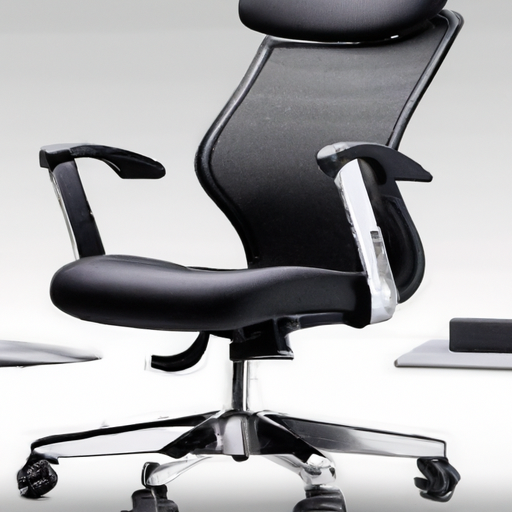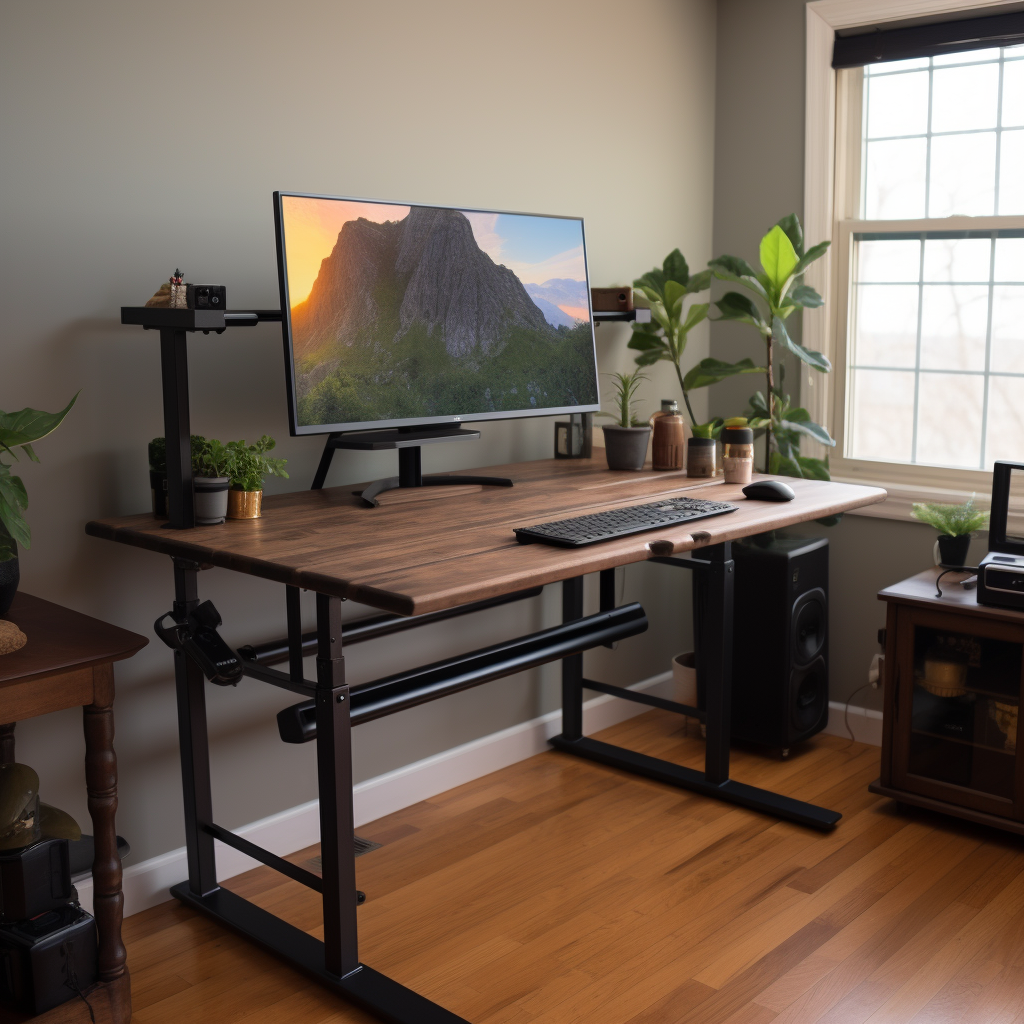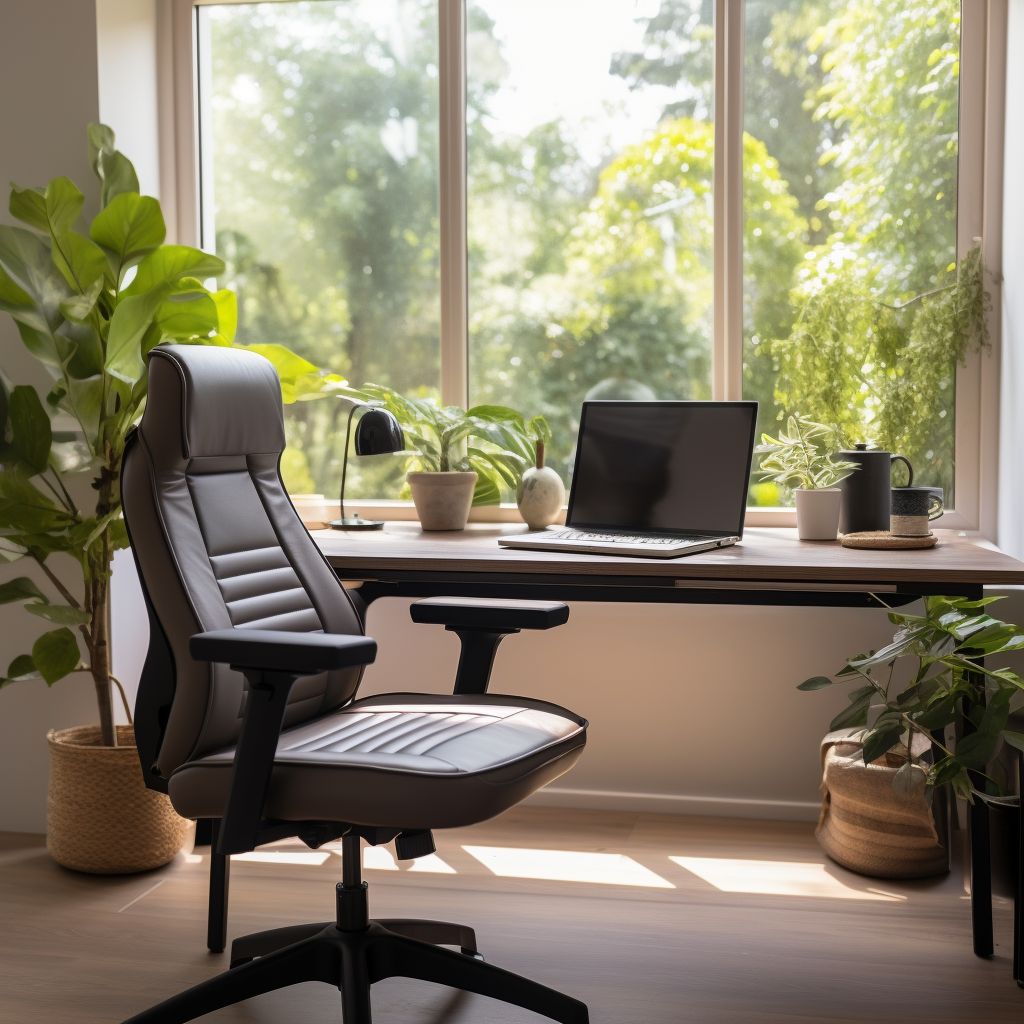
Have you ever wondered whether it’s worth investing in an ergonomic chair? We all spend countless hours sitting at our desks, so it’s important to ensure we have the right support to minimize discomfort and potential health issues. In this article, we’ll explore the benefits of ergonomic chairs and why they may be a smart investment for your long-term well-being. Say goodbye to achy backs and stiff necks – it’s time to prioritize your comfort and productivity!

The Importance of Ergonomics
What is ergonomics?
Ergonomics is the science of designing and arranging things to optimize human well-being and increase overall efficiency. It focuses on adapting and adjusting workplaces, furniture, and equipment to fit the needs of individuals, promoting comfort, productivity, and overall health.
Why is ergonomics important?
Ergonomics plays a crucial role in maintaining good health and preventing injuries, especially in work environments where individuals spend long hours sitting. By providing optimal support and alignment for the body, ergonomic chairs can help prevent musculoskeletal disorders, reduce discomfort, and enhance productivity.
Effects of poor ergonomics
Poor ergonomics can have detrimental effects on both physical and mental health. Without proper support, individuals may experience back and neck pain, slouching, poor posture, carpal tunnel syndrome, eye strain, and headaches. These issues can disrupt daily activities, impact performance, and ultimately lead to long-term health issues.
Benefits of ergonomic chairs
Ergonomic chairs are specifically designed to provide optimal support and comfort for individuals who sit for extended periods. They offer a range of benefits, including:
- Improved posture: Ergonomic chairs promote proper spinal alignment, reducing the strain on the back, neck, and shoulders. By maintaining a correct posture, individuals can avoid the discomfort associated with poor sitting positions.
- Enhanced comfort: With adjustable features and cushioned seating, ergonomic chairs offer customized support for different body types. This increased comfort allows individuals to focus on their tasks without the distraction of discomfort.
- Increased productivity: By reducing fatigue, discomfort, and distractions, ergonomic chairs can significantly improve concentration and productivity. When individuals are comfortable and free from pain, they can stay focused for longer durations, leading to greater efficiency.
- Reduced health risks: Investing in ergonomic chairs can prevent the development of musculoskeletal disorders caused by poor posture and prolonged sitting. By prioritizing ergonomics, individuals can protect their long-term health and well-being.
Factors to Consider
Budget
When considering purchasing an ergonomic chair, it’s important to establish a budget. Ergonomic chairs range in price, and setting a budget will help you narrow down your options and find the most suitable chair within your price range.
Usage
Another factor to consider is how often and for what purposes you will be using the chair. Are you primarily using it for work at a desk, or do you also need it for other activities such as gaming or crafting? Knowing the intensity and duration of chair usage will help determine which features are essential for your needs.
Body type
Everyone has a unique body shape and size, so it’s important to choose an ergonomic chair that fits your body well. Look for chairs that offer adjustable features such as seat height, seat depth, and armrest height, allowing you to customize the chair to your specific needs.
Adjustability
Adjustability is a key factor to consider when choosing an ergonomic chair. Look for chairs that offer a wide range of adjustable features, including seat height, lumbar support, armrests, seat depth, and angle. These adjustable features ensure that you can find the most comfortable and supportive position for your body.
Comfort
Comfort is paramount when choosing an ergonomic chair. Look for chairs that offer cushioned seats and backrests made from breathable materials. Additionally, consider features such as padded armrests and headrests for added comfort during longer periods of sitting.
Design and aesthetics
While functionality is important, the design and aesthetics of the chair are also factors to consider. Choose a chair that fits well with your workspace and personal style. Ergonomic chairs come in various designs, ranging from sleek and modern to more traditional options, allowing you to find one that complements your aesthetic preferences.
Features to Look for
Adjustable seat height
The adjustable seat height feature allows you to position your feet flat on the floor, maintaining proper posture and reducing strain on your legs and lower back. Look for chairs with a pneumatic adjustment lever, enabling easy and smooth height adjustments.
Lumbar support
Lumbar support is a must-have feature that helps maintain the natural curve of your spine and prevents lower back pain. Look for chairs with adjustable lumbar support, so you can customize the level of support that feels most comfortable for your back.
Armrests
Adjustable armrests help alleviate shoulder and neck tension by supporting your arms at a comfortable height. Look for chairs with armrests that can be adjusted in both height and width, allowing you to position your arms in a relaxed and ergonomic position.
Seat depth and angle
Chairs with adjustable seat depth and angle provide optimal thigh support and promote proper circulation. Look for chairs that allow you to adjust the seat depth to a comfortable position that ensures your thighs are fully supported, preventing pressure on your knees and hips.
Headrest
A headrest can provide additional support and help reduce strain on the neck and upper back. Look for chairs with an adjustable headrest that allows you to position it at the ideal height and angle for your neck and head.
Swivel and casters
Swivel and caster features allow for easy movement and maneuverability while sitting. Look for chairs with a smooth swivel mechanism and casters that are suitable for your flooring. This ensures you can easily reach different areas of your workspace without straining or stretching.
Material and cushioning
Consider the materials used in the chair’s construction and the quality of cushioning. Look for chairs with breathable and durable materials that provide adequate support and comfort. High-density foam and memory foam cushions are often recommended for superior comfort and longevity.
Potential Health Issues
Back and neck pain
Poor ergonomics can lead to back and neck pain due to improper spinal alignment, lack of lumbar support, and strained neck muscles. Over time, this can result in chronic pain and musculoskeletal disorders. Investing in an ergonomic chair can help alleviate and prevent these issues.
Slouching and poor posture
Sitting for extended periods without proper support can cause slouching and poor posture. This can lead to muscle imbalances, increased strain on the spine, and an increased risk of developing postural-related problems. Ergonomic chairs promote proper alignment and support, helping individuals maintain good posture throughout the day.
Carpal tunnel syndrome
Carpal tunnel syndrome is a common condition that affects the hands and wrists, often caused by repetitive motions and improper wrist alignment while typing or using a computer mouse. Ergonomic chairs with adjustable armrests and wrist supports can help alleviate strain on the wrists and reduce the risk of developing carpal tunnel syndrome.
Eye strain and headaches
Extended periods of screen time can lead to eye strain and headaches. Poor ergonomics, such as improper monitor placement or incorrect seating positions, can exacerbate these issues. An ergonomic chair can help position your body correctly, allowing for optimal viewing angles and reducing eye strain and discomfort.
Productivity and Focus
Improved concentration
An ergonomic chair provides the comfort and support needed to minimize distractions and improve concentration. With the right chair, individuals can maintain a focused and alert mindset, enhancing their ability to perform tasks with accuracy and efficiency.
Increased productivity
When individuals are comfortable and free from discomfort, they can concentrate on their work for longer periods, leading to increased productivity. Ergonomic chairs reduce fatigue and promote proper posture, allowing individuals to focus on their tasks without unnecessary breaks or interruptions caused by discomfort.
Reduced fatigue and discomfort
Fatigue and discomfort can have a significant impact on productivity and overall well-being. Ergonomic chairs help minimize fatigue by providing optimal support and reducing strain on the body. By reducing discomfort and promoting proper alignment, individuals can work for longer durations without experiencing significant fatigue.
Long-Term Savings
Prevention of musculoskeletal disorders
Investing in an ergonomic chair can help prevent the development of musculoskeletal disorders caused by poor posture and prolonged sitting. By maintaining proper alignment and support, ergonomic chairs reduce the risk of chronic pain, injuries, and long-term health issues, potentially leading to significant healthcare expenses in the future.
Lower healthcare expenses
By prioritizing ergonomics and investing in an ergonomic chair, individuals can reduce the likelihood of developing health issues associated with poor sitting habits. This, in turn, can lead to lower healthcare expenses, as individuals are less likely to require medical attention or treatments for musculoskeletal disorders.
Longevity and durability
Ergonomic chairs are built to last, often made with high-quality materials and reinforced structures. By investing in a durable ergonomic chair, individuals can enjoy its benefits for a longer time without the need for frequent replacements. This saves money in the long run and ensures continued support and comfort.
Choosing the Right Ergonomic Chair
Try before you buy
As everyone’s body is unique, it’s important to try out an ergonomic chair before making a purchase. Visit local furniture stores or try out different models at office supply stores to find the chair that fits your body shape and provides the desired support and comfort.
Read reviews and ratings
Before making a decision, it’s helpful to read reviews and ratings of different ergonomic chairs. This allows you to gain insights from other users’ experiences and make an informed choice based on their feedback. Look for chairs with positive reviews and high ratings in terms of both comfort and durability.
Consider warranties and return policies
When investing in an ergonomic chair, it’s essential to consider the warranty and return policies offered by the manufacturer or retailer. This ensures that you have recourse in case of any defects or issues with the chair. Look for chairs with generous warranty periods and flexible return policies to ensure a satisfactory purchase experience.
Consult an expert
If you have specific health concerns or unique requirements, it may be beneficial to consult an ergonomic specialist or healthcare professional. They can provide personalized recommendations based on your needs and help you choose the right ergonomic chair for your situation.
Alternatives to Ergonomic Chairs

Standing desks
Standing desks are a popular alternative to ergonomic chairs, offering the opportunity to work in a standing position. This promotes better circulation, improved posture, and increased calorie expenditure. However, it’s important to find a balance between sitting and standing to avoid other potential issues such as leg and foot fatigue.
Exercise ball chairs
Exercise ball chairs are another alternative that promotes active sitting and engages core muscles. They help improve posture and provide the benefits of both sitting and exercise. However, it’s important to note that they may not be suitable for everyone, especially those with certain health conditions or balance issues.
Posture cushions and supports
Posture cushions and supports can be used alongside regular chairs to enhance comfort and promote proper posture. These accessories provide additional support and help align the spine correctly. They can be beneficial for individuals who want to improve their posture without investing in a new chair.
Conclusion
Investing in an ergonomic chair is worth considering for individuals who spend long hours sitting at a desk or workstation. By prioritizing ergonomics, individuals can improve their overall well-being, prevent potential health issues, increase productivity, and experience long-term savings. By considering factors such as budget, usage, body type, adjustability, comfort, and design, individuals can find the perfect ergonomic chair that suits their specific needs. Alternatively, standing desks, exercise ball chairs, and posture cushions are alternative options to consider. Ultimately, finding the right ergonomic solution will lead to improved health, comfort, and productivity, making it a worthwhile investment.







